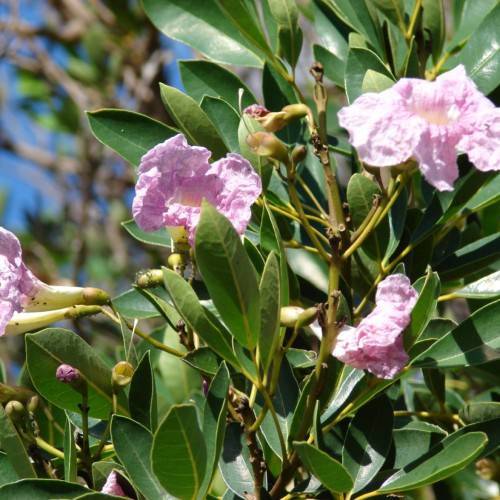
tabebuia
Tabebuia rosea
Cycle:
Perennial
Watering:
Average
Hardiness Zone:
9 - 11
Flowers:
Flowers
Sun:
Full sun
Leaf:
Yes
Growth Rate:
Low
Maintenance:
Low
Drought Tolerant:
Yes
Salt Tolerant:
Yes
watering
Tabebuia rosea (Pink trumpet tree) prefers a barely moist soil and weekly watering. However, depending on the environment your plant is in, you may need to adjust the amount and frequency of watering throughout the year. For example, during the hottest or driest parts of the year, you should adjust your watering schedule accordingly to keep the soil lightly moist but not waterlogged. During the growing season, water Tabebuia rosea when the top couple of inches of the soil have become dry; usually about once a week. In the winter months, water only when the soil begins to dry out; usually 1 to 2 times a month should be sufficient. The best way to determine when your plant needs watering is to check the soil's moisture level; if it feels dry to the touch, it's time to water.
sunlight
Tabebuia rosea, commonly known as the "pink trumpet tree", prefers full sun exposure for most of the day. Ideally, it should receive approximately 8 to 10 hours of sunlight each day. This will provide the best results for healthy growth and flowering. Tabebuia rosea can also tolerate some partial shade, so it can be grown in locations that have light shade for part of the day. In areas with high temperatures, Tabebuia rosea should also be given some partial shade during the hottest part of the day, which is usually from late morning to early afternoon.
pruning
Tabebuia rosea is known as the pink trumpet tree and when it comes to pruning, it is best to prune in the late winter or early spring just before the new growth begins to emerge. This will help keep the tabebuia bushier, and will also help encourage new flowers to bloom more densely. Since tabebuia grows quickly and puts on a lot of new growth, it will need to be pruned back quite a bit each year. Start by removing any dead or diseased branches, then prune back the outer branches by about 25 percent of their total length. When it comes to the remaining branches, you can go ahead and prune them back by an additional 10-20 percent, depending on how hardy your tabebuia is. This will help keep its size in check and will also promote a more bushy effect. Be sure to use sharp pruning shears when you prune and make sure to give your tabebuia an extra dose of fertilizer right after pruning. This will help it recover quickly and will help ensure it has lots of blooms next spring.
